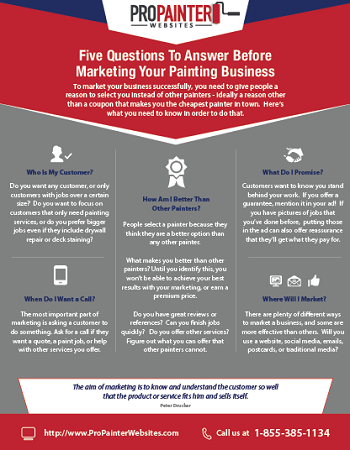Seasonal Considerations For Commercial Exterior Paint: What You Required To Know
Seasonal Considerations For Commercial Exterior Paint: What You Required To Know
Blog Article
Authored By-Burnham Chaney
When you're intending a business outside paint project, seasonal aspects can make or damage your outcomes. You'll want to think about just how temperature and humidity effect paint application and drying out times. Picking the ideal season can ensure your paint sticks appropriately and lasts longer. But which seasons are really the very best for this sort of work? Allow's check out the key elements that can impact your job's success.
The Effect of Temperature on Paint Application
When you're planning a commercial exterior paint job, the temperature can dramatically affect just how well the paint adheres and dries out.
Preferably, you wish to repaint when temperature levels vary between 50 ° F and 85 ° F. If it's too chilly, the paint might not heal effectively, causing problems like peeling off or fracturing.
On the other side, if it's too hot, the paint can dry also swiftly, avoiding correct adhesion and resulting in an irregular coating.
You must likewise think about the moment of day; morning or late afternoon provides cooler temperatures, which can be a lot more positive.
Always inspect the maker's recommendations for the particular paint you're utilizing, as they frequently provide support on the suitable temperature level range for optimum results.
Humidity and Its Impact on Drying Times
Temperature level isn't the only environmental variable that influences your industrial exterior painting job; humidity plays a substantial function too. please click the next page can decrease drying out times considerably, impacting the total quality of your paint work.
When the air is filled with dampness, the paint takes longer to treat, which can bring about problems like poor attachment and a higher danger of mildew growth. If you're painting on a specifically damp day, be planned for extensive wait times in between layers.
It's essential to monitor regional climate condition and plan accordingly. Preferably, go for moisture levels in between 40% and 70% for ideal drying out.
Maintaining these factors in mind guarantees your job remains on track and delivers a long-term coating.
Best Seasons for Commercial Outside Painting Projects
What's the very best season for your industrial external paint projects?
Spring and very early fall are normally your best options. Throughout these periods, temperature levels are light, and humidity levels are frequently lower, creating perfect conditions for paint application and drying.
Prevent summer season's intense heat, which can cause paint to dry also promptly, resulting in inadequate adhesion and coating. Similarly, winter's chilly temperatures can prevent correct drying out and treating, running the risk of the long life of your paint job.
Go for days with temperatures between 50 ° F and 85 ° F for optimum outcomes. Keep in mind to examine the neighborhood weather report for rainfall, as wet conditions can ruin your task.
Planning around these aspects guarantees your paint task runs efficiently and lasts longer.
Verdict
To conclude, planning your commercial exterior paint jobs around seasonal considerations can make a significant distinction in the result. By scheduling work during the optimal temperatures and humidity degrees, you'll guarantee much better bond and drying out times. Keep in mind to keep an eye on local weather report and choose the correct time of year-- spring and early fall are your best choices. Taking interior painting scaffolding will aid you attain a resilient and specialist coating that lasts.
